Hybrid Working
Our FindingsMOVING TOWARDS HYBRID WORKING
Key findings from research into the implementation of a co-designed hybrid working culture
Download resources
Who is this for?
Primary audience: SMEs, Voluntary sector
Secondary audience: Larger organisations, Public sector
Introduction
In 2020 the emergence of the Covid-19 pandemic led to a seemingly temporary but necessary change in how millions of people had to work: from home. The prevalence of high speed internet and video calling technologies made this possible for most, and post-pandemic we have seen many people remain in some type of home-working arrangement. As the pandemic eased, organisations and their people have started to return to work – albeit in a different way. Many are reflecting on what happened during the pandemic and whether home working is still a valid component of day-today work.
Much of our current knowledge about work cultures that are not ‘traditional’ (i.e. not ‘office work’) predates the pandemic and is based primarily on research that has been specifically into ‘remote’ working. However, the pandemic has demonstrated the need to look beyond the dichotomy of office work and remote work, to considering blended or ‘hybrid’ ways of working.
Hybrid working is an arrangement where in-person work and remote work co-exist, and workers use at-work spaces and at-home spaces for work as needed. It became clear that workers and employers were increasingly keen to explore new ways of working, which created the perfect opportunity for research into how frontline organisations (primarily SMEs and charities) could develop flexible, hybrid cultures of work that are inclusive, fair, and equitable.
We looked at co-designing a hybrid work culture which features the active involvement of all stakeholders who will be benefit from it. It’s an approach recommended by the Chartered Institute of Personnel and Development.
We worked with Age UK in Cornwall and the Isles of Scilly to develop and implement a collaborative, consutative process of change with the workforce, with the aim of discovering how other businesses could best implement a similar process within their organisations.
The outcomes of this research are aimed at primarily at organisations that do not want to co-design solutions from scratch but need a quick and handy sense of what to watch out for and how to navigate the change in a thoughtful and inclusive manner.
We have also created a process document that businesses can use to create a co-designed hybrid working culture that helps to reap the benefits and overcome any pitfalls.
The Inclusivity Project
The Inclusivity Project is a joint piece of work, funded by the European Regional Development Fund and the South West Academic Health and Science Network. The project brings together research from the European Centre of Environment and Human Health at the University of Exeter in collaboration with our partners, Cornwall and Isles of Scilly LEP, disAbility Cornwall, Age UK Cornwall and Isles of Scilly, to support small and micro businesses in Cornwall.
The Inclusivity Project has worked to generate a better understanding of some of the challenges and opportunities facing employers in creating inclusive places to work, particularly for people who are 50+, disabled, or have a long-term health condition.
Background
We initiated the project in 2021 with members of Age UK in Cornwall and the Isles of Scilly to implement a co-designed hybrid working culture. While Age UK is a charity, it has facets to its structure that are relatable to an SME environment – being an entity in Cornwall in its own right responsible for its own funding and staffing, setting its own priorities and with local governance. With 160 staff members and over 300 volunteers, a culture change in Age UK, like any comparable organisation, needs to be a slow, well thought-through and constantly evolving process.
We facilitated a series of discussions with members of the Age UK workforce with wide-ranging roles and responsibilities in order to give them the opportunity to have a say in, and influence how, the transition process was designed and delivered.
From the key themes that emerged from the discussions, it became clear that there was a need for a thoughtful, collective response to the changing context of work.
There had been unprecedented changes to the culture of work within Age UK, and alongside some real benefits came the challenges of a blended working environment. On one side of the coin there were positive indications associated with work life balance; more opportunities for self-care and personal growth; increased flexibility in planning the work week; higher productivity and better work performance. On the flipside a range of practical pitfalls also emerged, such as IT issues; the need for digital training needs; video calling fatigue; difficulties from isolation and team structure.
Our findings
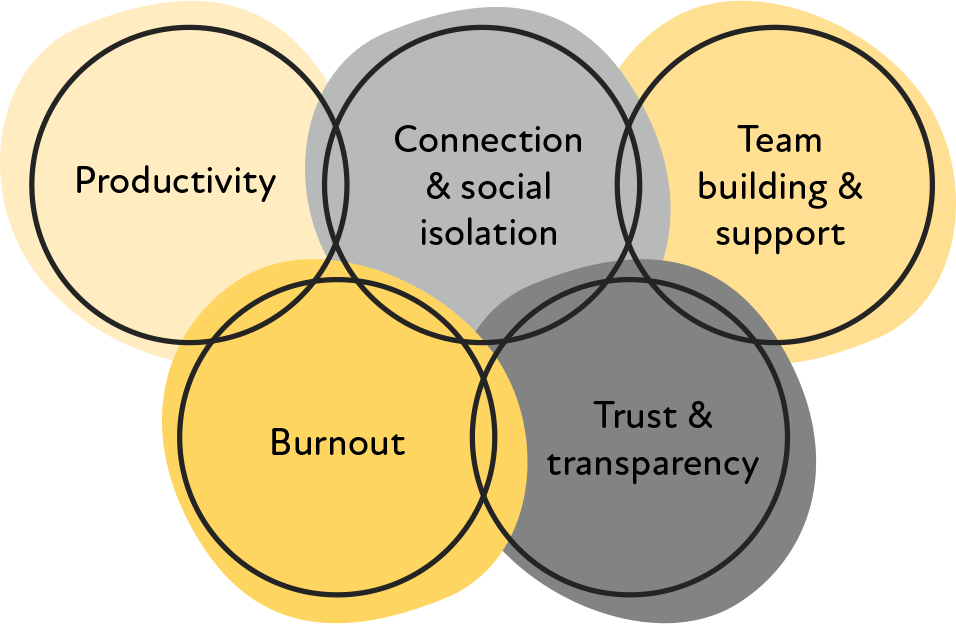
1. Productivity
Key findings:
- Explicit guidelines need to be created and communicated around monitoring performance.
- Prioritising quality over quantity must become the norm when evaluating and measuring productivity.
The way that productivity is monitored and measured within the hybrid work context will no doubt look different going forward. ‘Visibility’ becomes a key issue here, where out of sight can often mean out of mind. This can create uncertainties and anxieties around evaluations and performance among the workforce.
As organisations move to hybrid ways of working, discussions around productivity and performance are needed. It’s a matter of re-imagining and re-assessing perceptions of productivity, performance & accountability within the organisation based on the organisational vision, purpose and goals.
There will need to be clarity about how outcomes are measured, and this must be made explicit to the workforce so that they can adapt their working styles accordingly. Organisations must recognise and celebrate individual achievements as a team, and consider how these are communicated in the hybrid working context.
2. Team building & support
Key findings:
- Asynchronous working could pose a risk to teamwork if not managed properly.
- Establishing support systems for de-escalation or de-briefing for frontline staff must become a key priority.
Team building has suffered in the absence of a traditional physical office space. Employees are at risk of becoming isolated and working in siloes. Away from the 9 to 5, people can adopt asynchronous work. This is where employees work at times that are convenient for them, and not necessarily dependent on collaborative or real-time communication with others. This can pose risks to teamwork if it’s not managed properly.
There is a need for an additional support system for people, both 1 on 1 and as a group, to help people deal with isolation, new ways of ‘team working’ and so on. This is especially important for roles and responsibilities that are challenging. For example there is a need to establish peer support systems or facilitated debrief sessions for de-escalation or de-briefing at the end of a particularly demanding day.
It is also possible to create virtual ‘teams’ for those who don’t sit around a service, so that they are less isolated, creating group cohesion rather than operating in silos.
3. Connection & social isolation
Key findings:
- The workforce has lost access to the crucial social connectedness that comes from working together in a physical workspace.
- There are health and wellbeing dangers from silo working.
- Creating accessible work and social spaces for everyone should be a key priority for organisations.
Hybrid working introduces unique challenges around the a loss of connection and potentially greater isolation, especially for employees who live alone and rely on office spaces for social interaction. These are statements that can be commonplace:
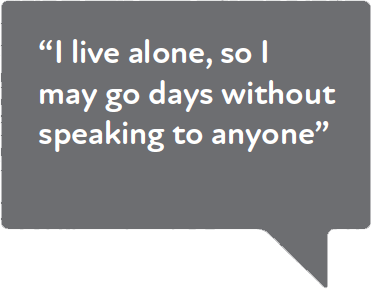
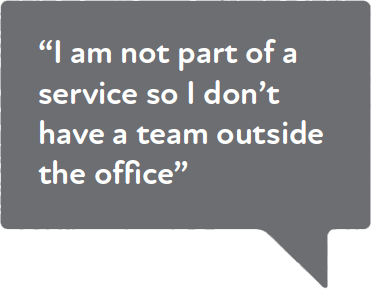
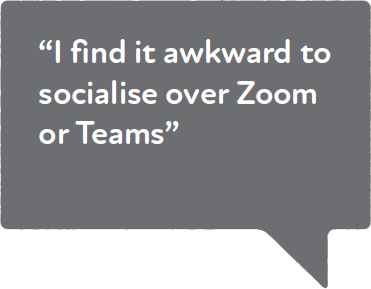
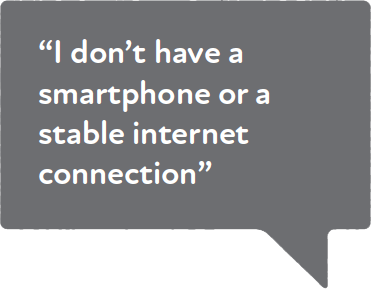
With physical social spaces being replaced by virtual social spaces, the workforce can grapple with maintaining relationships with their peers, colleagues and managers in the same way as they do with in-person interactions. This can be damaging to their health and wellbeing.
The need for making virtual social spaces accessible and enjoyable to everybody is a key organisational priority.
4. Burnout
Key findings:
- Achieving work/life balance in a hybrid work context can be more challenging
- People require access to support especially if they are not always visible to peers or managers.
The speed and intensity of work is higher at home, because people need to balance contrasting work-life demands which add an additional layer of stress.
In the absence of a physical work space, a combined lack of visibility and access to support result in the perception that there is a real danger of burnout – or struggling without being noticed.
Technology solutions can be a key player here. They can help with optimising diary management that prioritises wellbeing, and scheduling of reminders or rotas for breaks within teams.
5. Trust & Transparency
Key findings:
- Not all roles can be made hybrid, so flexibility may look different to different people
- Transparency in the decision-making process is essential.
The key to understanding hybrid work cultures is to acknowledge that not everyone has the same type/degree of flexibility as an option. Transparency in the decision-making process going forward not only help manage expectations, but also level the playing field and ensure that the process of change is fair.
Making the hybrid work strategy of the organisation consultative, explicit, yet not prescriptive, can help build trust in the organisation’s commitment to collaboration and co-design, and help the workforce navigate the transition better.
Conclusion
We have created a process document available on our website that serves as a guide to implementing a co-designed approach to hybrid work culture.
The move to a hybrid work environment can provide benefits for both the organisation and its workforce. However a co-design approach where there is engagement between all parties is key to making hybrid working effective. It’s vital to state here that one size does not fit all. Any co-design approach must be tailored to:
- the organisation’s size, capacity and goals.
- staff roles, responsibilities, needs and preferences.
Culture change is a slow process and will require adjustments over time: it is important to set these expectations at the start of the process.
Periodic review and feedback from the workforce not only ensures transparency and consultation, but also creates expectations that this is a marathon, not a sprint.
Finally, any development of hybrid working must be genuine and transparent, and not just a managerial ‘tick-box’ exercise. It must have real impact to the wellbeing of the workforce. Hybrid work offers up an opportunity to make work more accessible, enjoyable and enriching to our lives.
Acknowledgements
- With thanks to Tracey Roose, Chief Executive Officer, AgeUK Cornwall & The Isles of Scilly for collaborating with The Inclusivity Project in this work.
- With thanks to the staff of AgeUK Cornwall and The Isles of Scilly for their engaged participation in this work.
